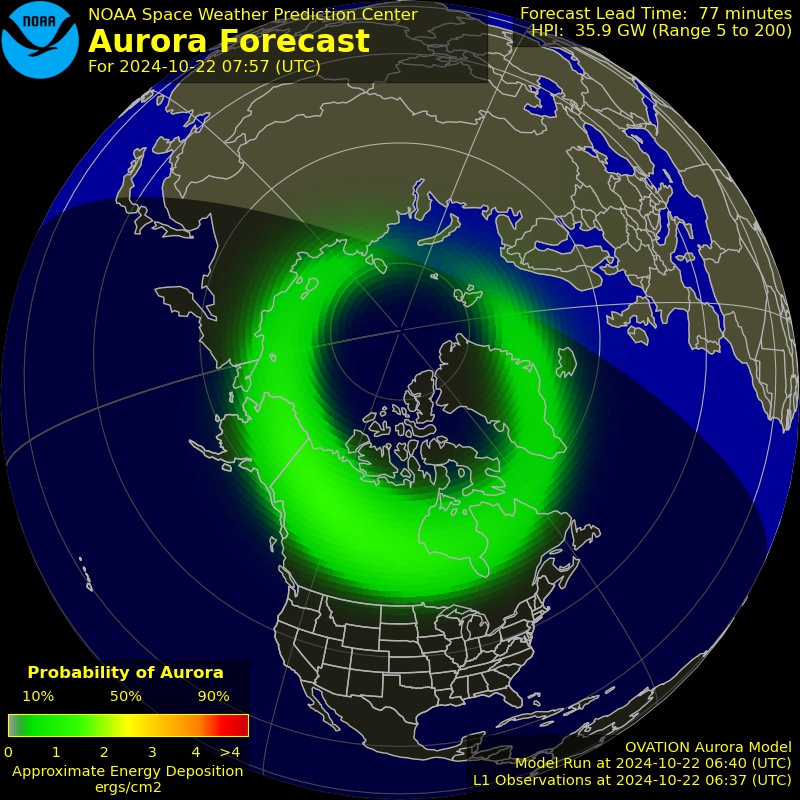Main Masthead
Yellowknife Amateur Radio Society (VE8YK)
Earthquakes
Earthquakes in the last 30 days (Canada)
-
2025-11-10T22:33:57Z: M3.09 79 km NNE of Bella Bella 1, BC
2025-11-10T22:33:57Z: M3.09 79 km NNE of Bella Bella 1, BC
-
2025-11-10T08:12:19Z: M2.19 14 km ESE of Erie, PA
2025-11-10T08:12:19Z: M2.19 14 km ESE of Erie, PA
-
2025-11-10T01:52:07Z: M0.47 11 km ESE of Saint George, NB
2025-11-10T01:52:07Z: M0.47 11 km ESE of Saint George, NB
Space Weather
Spaceweather.gc.ca - Geomagnetic Activity
Storm Watch, Current Conditions, and Geomagnetic Forecast-
No storm watch
No storm watch
-
Current: POL active, AUR active, SUB quiet
Current conditions of the magnetic fieldPolar (POL): Active Auroral (AUR): Active Sub-Auroral (SUB): Quiet
-
Forecast: POL active, AUR active, SUB quiet
Geomagnetic forecast for the next 6 hoursNo storm watchPolar (POL): active + active intervalsAuroral (AUR): active + active intervalsSub-Auroral (SUB): quiet
Canada Space Agency
Canadian Space Agency - Space Science & Space Technology
Canadian Space Agency news-
Canadian science experiments conducted onboard the International Space Station
Over the last few weeks, Canadian Space Agency (CSA) scientists and engineers on the ground in the Payload Telescience Operations Centre (PTOC) supported nine on-orbit science sessions on the International Space Station (ISS). With the help of astronauts, they conducted activities for Canadian science experiments CARDIOBREATH, Space Health and Vascular Aging.
-
[Video] Watch a solar eclipse without damaging your eyes
Learn about safe practices for observing a solar eclipse. To prevent serious eye damage, always avoid direct eye contact with the Sun, especially during a solar eclipse. Use special glasses with eclipse filters, as regular sunglasses won't offer sufficient protection. Prioritize your eye health while enjoying the beautiful spectacle of a solar eclipse.
-
Astronauts and materials for Canadian science heading to the International Space Station aboard Crew-10
NASA's SpaceX Crew-10 mission is scheduled to launch tomorrow, March 12, from Kennedy Space Center in Florida. SpaceX's Crew Dragon spacecraft will lift off atop a Falcon 9 rocket and is expected to dock to the International Space Station (ISS) the following day. Crew Dragon will carry NASA astronauts Anne McClain as commander and Nichole Ayers as pilot, along with Japan Aerospace Exploration Agency astronaut Takuya Onishi, and Roscosmos cosmonaut Kirill Peskov to the ISS for an approximate five-month science mission. The crewed vessel will also deliver materials for Canadian experiments Vascular Calcium and Space Health, which includes headbands and wearables for the Bio-Monitor, a Canadian innovative all-in-one wearable technology designed to fit into an astronaut's daily routine and measure physiological data.
Online
We have 317 guests and no members online


